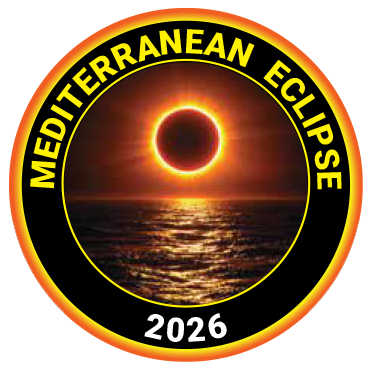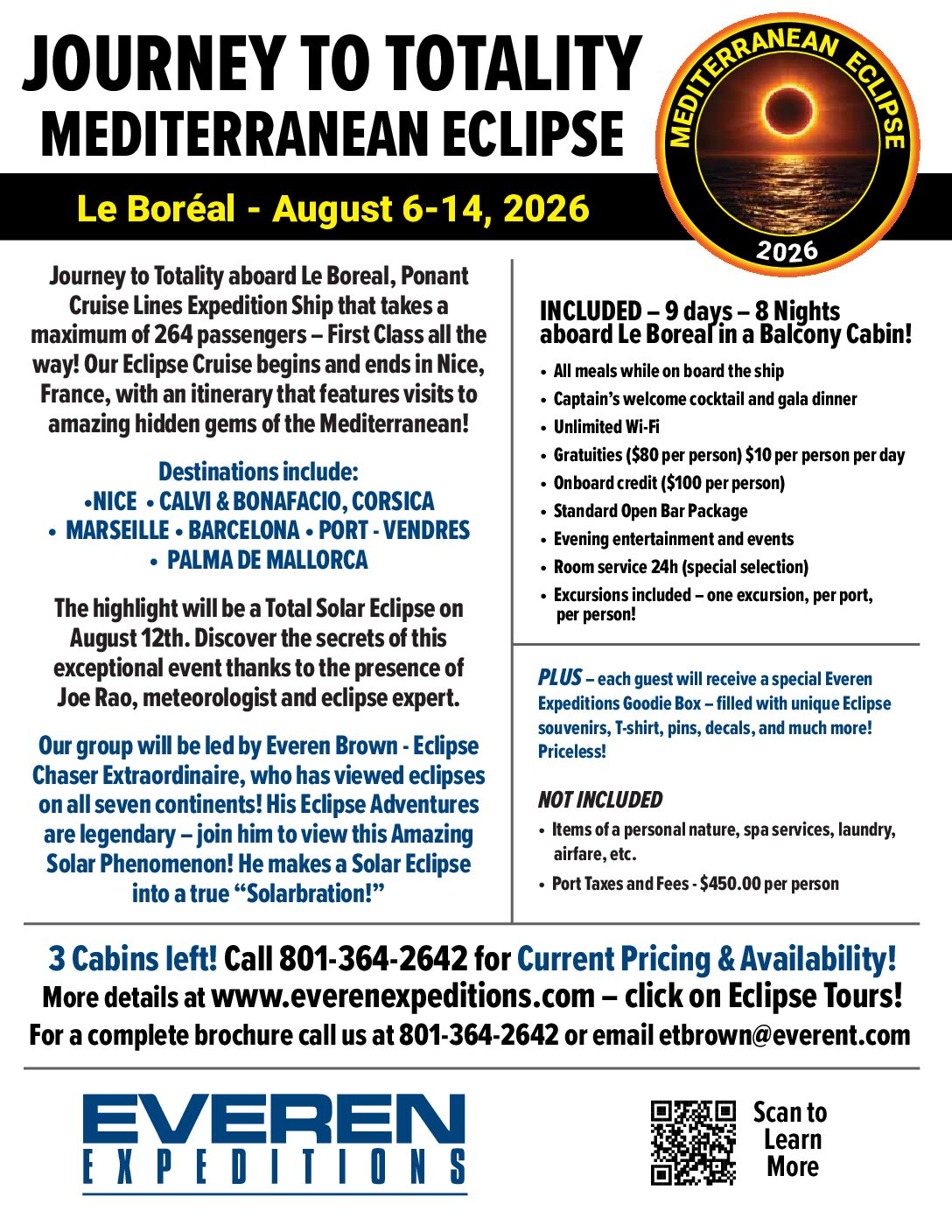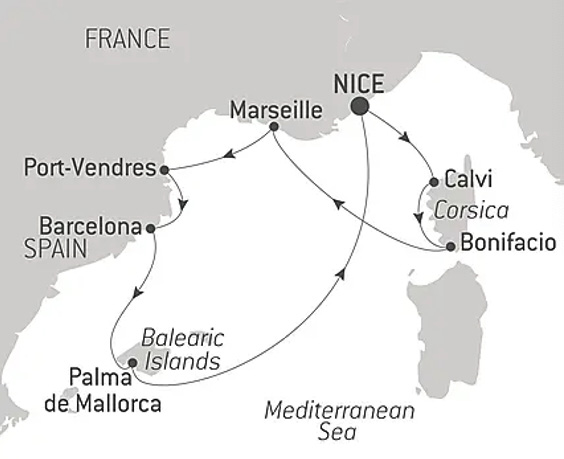
“This will be an exciting expedition. One you won’t want to miss!” ~ Everen T Brown

Mediterranean – Total Solar Eclipse –
EVEREN EXPEDITIONS Eclipse Group – Le Boréal
Experience a total solar eclipse in the Mediterranean aboard the fabulous La Boréal
| Dates: | Ship: |
|---|---|
| 6 Aug – 14 Aug, 2026 | Le Boréal |
| Tripcode: | Embarkation: |
| Nice | Nice, FR |
| Duration: | Disembarkation: |
| 9 nights | Nice, FR |
| Language: | |
| English Speaking Voyage |


